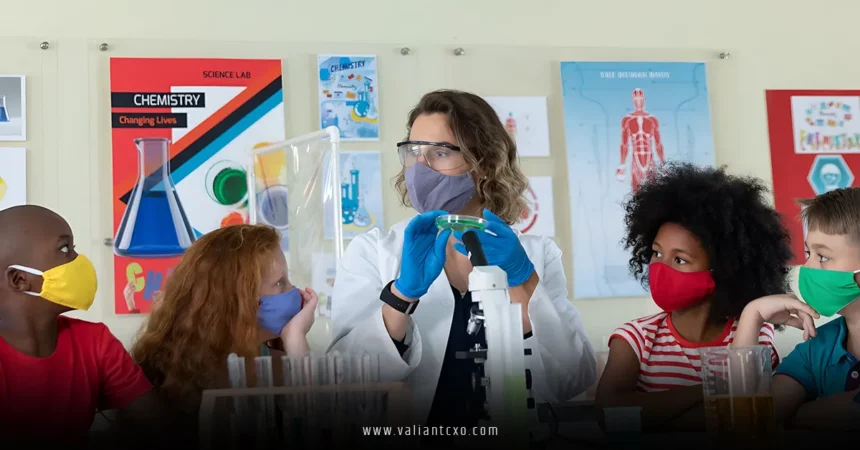Classroom environments are the heartbeat of education, where ideas spark, knowledge grows, and futures take shape. Picture a classroom as a garden: each student a unique plant, needing just the right mix of sunlight, water, and care to thrive. But what makes a classroom truly effective? How do you transform a room full of desks into a vibrant hub of learning? This article dives deep into the world of classrooms, exploring their dynamics, strategies for success, and the tools that make them tick. Whether you’re a teacher, parent, or student, understanding the classroom is key to unlocking its potential.
What Is a Classroom and Why Does It Matter?
Classroom Dynamics:A classroom is more than just four walls and a whiteboard. It’s a dynamic space where students and educators interact, ideas are exchanged, and critical thinking is nurtured. Think of it as a microcosm of society—a place where collaboration, conflict, and creativity collide. The classroom shapes not only academic outcomes but also social skills, emotional growth, and lifelong learning habits.
Why does the classroom matter so much? It’s where foundational moments happen. A single encouraging word from a teacher can ignite a student’s passion for learning, while a poorly managed classroom can stifle curiosity. Studies show that well-designed classroom environments improve student engagement by up to 25% (source: Edutopia). A classroom’s atmosphere directly influences how students absorb knowledge and develop confidence.
The Evolution of the Classroom
Classrooms have come a long way from the one-room schoolhouses of the past. Back then, a classroom was a rigid setup—rows of desks, a stern teacher, and a chalkboard. Today, classrooms are diverse, incorporating technology, flexible seating, and student-centered approaches. Modern classrooms might feature interactive whiteboards, collaborative workstations, or even virtual reality tools. This evolution reflects a shift toward inclusive, adaptive learning environments that cater to different learning styles.
Key Elements of an Effective Classroom
What makes a classroom hum with energy and productivity? It’s not just about fancy gadgets or colorful posters. An effective classroom balances structure, engagement, and flexibility. Let’s break down the core components that create a thriving classroom environment.
1. Classroom Layout and Design
Classroom Dynamics:The physical setup of a classroom can make or break the learning experience. Imagine walking into a room with cluttered desks and dim lighting—hardly inspiring, right? A well-designed classroom promotes focus and collaboration. Flexible seating arrangements, like pods or U-shaped layouts, encourage group work, while designated quiet zones support independent tasks.
Natural light, ergonomic furniture, and organized spaces also play a role. Research from the University of Salford suggests that classroom design impacts academic performance by up to 16%. Bright colors, accessible materials, and clear pathways create an inviting classroom that students want to be in.
2. Classroom Management Strategies
A classroom without structure is like a ship without a captain—chaos ensues. Effective classroom management sets clear expectations while fostering a positive environment. Teachers can use strategies like:
- Clear Rules: Simple, consistent rules help students understand boundaries.
- Positive Reinforcement: Praising good behavior motivates students more than punishing bad behavior.
- Engagement Techniques: Incorporating games, discussions, or hands-on activities keeps students invested.
A well-managed classroom minimizes disruptions and maximizes learning time. For example, a teacher might use a “quiet signal” (like raising a hand) to regain attention without raising their voice.
3. Incorporating Technology in the Classroom
Classroom Dynamics:Technology has transformed the classroom into a digital playground. From interactive apps to online learning platforms, tech tools make lessons more engaging. Tools like Google Classroom or Kahoot! turn traditional lessons into interactive experiences. However, balance is key—over-reliance on screens can disconnect students from hands-on learning.
In a tech-savvy classroom, teachers act as guides, helping students navigate digital resources responsibly. For instance, using tablets for research projects teaches critical thinking and digital literacy, skills essential for the 21st century.
4. Building a Positive Classroom Culture
A classroom thrives when students feel safe and valued. A positive classroom culture encourages respect, inclusivity, and collaboration. Teachers can foster this by:
- Modeling Respect: Treating every student with dignity sets the tone.
- Celebrating Diversity: Incorporating multicultural perspectives makes every student feel seen.
- Encouraging Collaboration: Group projects build teamwork and communication skills.
A supportive classroom culture reduces anxiety and boosts participation. Imagine a classroom where every student feels confident sharing their ideas—that’s the goal.
Challenges in the Modern Classroom
No classroom is without its hurdles. Teachers and students face challenges that can disrupt the learning process. Recognizing and addressing these issues is crucial for maintaining an effective classroom environment.
1. Diverse Learning Needs
Every classroom is a melting pot of learning styles, abilities, and backgrounds. Some students excel in hands-on tasks, while others thrive in verbal discussions. Differentiated instruction—tailoring lessons to meet diverse needs—is a must. For example, a teacher might offer visual aids for visual learners and audio recordings for auditory learners.
2. Student Engagement
Keeping students engaged in a classroom is like trying to herd cats—challenging but not impossible. With distractions like smartphones and social media, teachers need creative strategies to hold attention. Incorporating real-world examples, storytelling, or gamification can make lessons irresistible.
3. Time Management
Teachers often juggle packed curricula, administrative tasks, and classroom management. Time constraints can make it hard to cover material deeply. Prioritizing key concepts and using time-saving tools, like pre-made lesson plans from TeachHUB, can help teachers maximize their classroom time.
Strategies for Enhancing the Classroom Experience
How do you take a good classroom and make it great? Here are practical strategies to elevate the learning experience for everyone involved.
1. Personalizing Learning
Every student in a classroom is unique, so why teach them all the same way? Personalized learning adapts lessons to individual strengths and interests. For example, a teacher might assign a history project where students choose their topic—say, ancient Egypt or the Renaissance—based on their curiosity. This approach boosts engagement and ownership.
2. Encouraging Active Participation
A classroom where students passively listen is a missed opportunity. Active participation—through debates, role-playing, or hands-on experiments—makes learning memorable. Imagine a science classroom where students build mini volcanoes instead of just reading about them. That’s the kind of excitement that sticks.
3. Fostering Critical Thinking
The best classrooms don’t just teach facts; they teach students how to think. Asking open-ended questions, like “What would happen if…?” or “Why do you think this is true?” encourages students to analyze and problem-solve. A classroom that prioritizes critical thinking prepares students for real-world challenges.
4. Integrating Real-World Applications
Connecting lessons to real life makes the classroom relevant. For instance, a math teacher might show how algebra applies to budgeting or architecture. These connections help students see the value of what they’re learning, making the classroom a bridge to their future.
The Role of Teachers in the Classroom
Teachers are the architects of the classroom. Their passion, creativity, and adaptability shape the learning experience. A great teacher does more than deliver lessons—they inspire, guide, and connect with students. They’re like conductors of an orchestra, bringing out the best in each instrument (student) to create harmony.
Building Relationships
A teacher who knows their students’ names, interests, and struggles creates a classroom where students feel seen. Simple gestures—like greeting students at the door or asking about their weekend—build trust and rapport.
Adapting to Change
The classroom is ever-changing, with new technologies, curricula, and student needs. Great teachers stay flexible, embracing professional development and feedback to keep their classrooms dynamic.
The Future of the Classroom
Classroom Dynamics:What will the classroom of tomorrow look like? With advancements in AI, virtual reality, and hybrid learning, the possibilities are endless. Imagine a classroom where students explore ancient Rome through VR headsets or collaborate with peers across the globe via video calls. The future classroom will likely blend physical and digital spaces, offering personalized, immersive learning experiences.
However, the heart of the classroom will always be human connection. No matter how advanced technology becomes, the relationships between teachers and students will remain the cornerstone of education.
Conclusion
Classroom Dynamics:The classroom is more than a place—it’s a living, breathing ecosystem where minds grow, ideas flourish, and futures are built. By focusing on effective design, strong management, and a positive culture, educators can create classrooms that inspire and empower. Whether you’re a teacher shaping young minds or a student navigating your learning journey, the classroom is your space to shine. So, what’s stopping you from making the most of it? Dive in, engage, and let the classroom work its magic.
FAQs
1. How can teachers create a positive classroom environment?
Teachers can foster a positive classroom by setting clear expectations, modeling respect, and encouraging collaboration. Simple actions like praising effort and celebrating diversity make students feel valued.
2. What role does technology play in the modern classroom?
Technology enhances the classroom by offering interactive tools like apps, virtual simulations, and online platforms. It engages students but should be balanced with hands-on activities.
3. How can parents support their child’s classroom experience?
Parents can support their child’s classroom success by communicating with teachers, encouraging homework habits, and showing interest in their learning. Being involved makes a big difference.
4. Why is classroom design important for learning?
Classroom design impacts focus and engagement. A well-organized classroom with natural light, flexible seating, and accessible resources creates an inviting space for learning.
5. What are some ways to keep students engaged in the classroom?
To keep students engaged, teachers can use interactive methods like group projects, storytelling, or real-world examples. An active classroom sparks curiosity and participation.
For More:valiantcxo.com


